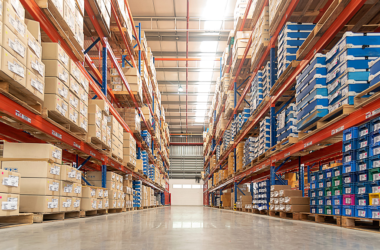A return center plays a crucial role in today’s retail and e-commerce landscape, providing customers with a streamlined way to send back items they no longer want or need. Whether it’s a wrong size, a defective product, or simply a change of mind, the return center handles these requests with efficiency, ensuring customer satisfaction and operational smoothness for businesses. Understanding how return centers work can make the process less stressful and more transparent for consumers.
The Purpose and Function of a Return Center
Return centers are specialized facilities designed to manage returned merchandise. Their primary function is to receive, inspect, process, and redistribute or dispose of returned products. These centers are essential in maintaining the flow of goods within retail supply chains, especially in sectors like clothing, electronics, and household items where return rates can be relatively high.
When customers initiate a return, their items are often sent to a return center rather than the original store. This centralization allows retailers to handle returns more consistently and reduces the burden on individual retail locations. Once products arrive at the return center, trained staff assess the condition of the items to determine if they can be restocked, refurbished, or need to be discarded.
Efficiency in the return center is critical to reducing costs for businesses. Each returned item represents a potential loss, so the quicker and more accurately products are processed, the better the chances of recovering value from returns. Moreover, return centers help protect the environment by ensuring that reusable items are not simply thrown away but find a new purpose, whether through resale, donation, or recycling.
How Return Centers Improve the Customer Experience
Return centers directly impact the customer experience by making the return process straightforward and reliable. When shoppers know that returns are handled efficiently, they feel more confident making purchases, especially online where trying items before buying is impossible. This assurance can increase customer loyalty and trust in a brand.
Most return centers are integrated with the retailer’s customer service systems. This integration allows customers to track their return status, get updates on refunds, and receive clear instructions on how to package and send back items. Such transparency reduces frustration and uncertainty, which are common pain points in return processes.
Some retailers offer prepaid return labels and easy drop-off locations linked to return centers, further simplifying the process. This convenience is part of a broader strategy to reduce barriers to shopping and encourage repeat business. In addition, a well-run return center can speed up refund processing times, ensuring customers receive their money back promptly.
Challenges Faced by Return Centers and How They Adapt
Return centers face numerous challenges as the volume of returns increases with growing e-commerce sales. One of the biggest issues is handling the sheer quantity of items that need to be processed quickly without compromising accuracy. Each product must be inspected to verify its condition and decide the appropriate next steps.
The diversity of products that arrive at return centers requires flexible systems and skilled staff. From electronics to clothing, every category has specific handling needs. Some items may need technical repairs, others require sanitization, and many must be carefully repackaged.
Technology plays a pivotal role in helping return centers adapt to these challenges. Automated scanning systems, machine learning algorithms, and inventory management software allow faster sorting and better decision-making regarding product disposition. These advances help maintain operational efficiency and reduce human error.
The Environmental Impact of Return Centers and Sustainable Practices
Return centers also have an environmental responsibility. The increase in returns can lead to higher waste levels if products are discarded rather than reused. To counter this, many return centers have adopted sustainable practices focused on minimizing waste.
Efforts include refurbishing returned electronics for resale, donating items in good condition, and recycling materials that cannot be reused. Some return centers partner with third-party organizations to handle sustainable disposal and find new uses for returned goods.
By promoting circular economy principles, return centers contribute to reducing landfill waste and the environmental footprint of retail. These initiatives align with growing consumer demand for eco-friendly business practices, which can enhance brand reputation and customer satisfaction.






